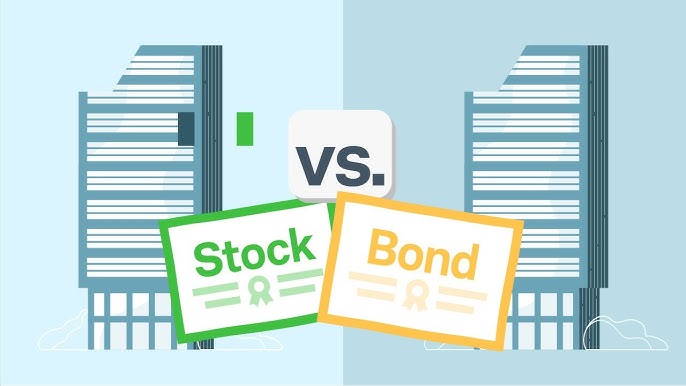
When it comes to investing, two of the most common choices are stocks and bonds. While both play an essential role in wealth-building, they serve different purposes and come with distinct risks and rewards. Understanding these differences can help you decide which investment strategy aligns best with your financial goals and risk tolerance.
Understanding Stocks
“Stocks: Where risk meets reward.”
Stocks represent ownership in a company. When you buy shares, you become a partial owner and can earn money in two primary ways:
- Capital Gains: When the stock’s value rises, you can sell it for a profit.
- Dividends: Some companies distribute a portion of their earnings to shareholders as cash payouts.
Pros of Investing in Stocks
- Higher Growth Potential: Stocks historically offer better long-term returns than bonds.
- Dividend Income: Some stocks provide consistent dividend payments, adding to your earnings.
- Liquidity: Stocks are easily bought and sold in public markets.
Cons of Investing in Stocks
- Volatility: Stock prices can fluctuate significantly, especially during economic uncertainty.
- Emotional Stress: Market swings can test investor patience and discipline.
- Potential Losses: If a company underperforms or goes bankrupt, you may lose part or all of your investment.
Understanding Bonds
“Bonds: Stability with steady returns.”
Bonds are fixed-income investments that represent a loan from an investor to a corporation, government, or municipality. In return, the bond issuer agrees to pay back the principal (the original loan amount) along with regular interest payments, known as coupon payments.
Pros of Investing in Bonds
- Predictable Income: Bonds provide consistent interest payments.
- Lower Risk: Bonds are generally less volatile than stocks, making them a safer option.
- Capital Preservation: If held to maturity, you’ll typically receive your initial investment back.
Cons of Investing in Bonds
- Lower Returns: While safer, bonds often yield lower returns than stocks.
- Interest Rate Risk: Rising interest rates can reduce the value of your bond investments.
- Inflation Risk: Over time, inflation can erode the purchasing power of your fixed-income returns.
Key Differences: Stocks vs. Bonds
| Feature | Stocks | Bonds |
| Ownership | Represents company ownership | Represents a loan to a company or government |
| Returns | Higher potential for growth | Lower, stable returns |
| Risk Level | Higher volatility, more risk | Lower risk, more stability |
| Income Source | Dividends or capital gains | Fixed interest payments |
| Best For | Long-term growth investors | Conservative, income-focused investors |
Choosing the Right Strategy for You
“The right choice depends on your financial goals.”
Consider Stocks If:
- You have a long investment timeline (5-10+ years).
- You’re comfortable with market volatility and can handle short-term losses.
- Your goal is capital growth or maximizing returns over time.
Consider Bonds If:
- You have a shorter investment horizon or plan to retire soon.
- You prefer stable, predictable income over rapid growth.
- Your priority is capital preservation rather than aggressive gains.
Balanced Approach: Combining Stocks and Bonds
“Why not both?”
Many successful investors blend stocks and bonds to achieve a balance between growth and stability. A common strategy is the 60/40 portfolio, where 60% of assets are allocated to stocks and 40% to bonds. This offers growth potential while cushioning against market downturns.
Your ideal mix may vary based on:
- Age (younger investors may take on more stock exposure)
- Risk tolerance (conservative investors may favor more bonds)
- Financial goals (retirement planning often requires balancing both asset types)
Final Thoughts
Both stocks and bonds have their place in a well-rounded investment strategy. While stocks offer higher growth potential, bonds provide stability and consistent income. By understanding their differences and aligning them with your financial goals, you can create a portfolio that’s tailored to your unique needs.
Invest wisely—and watch your wealth grow.


